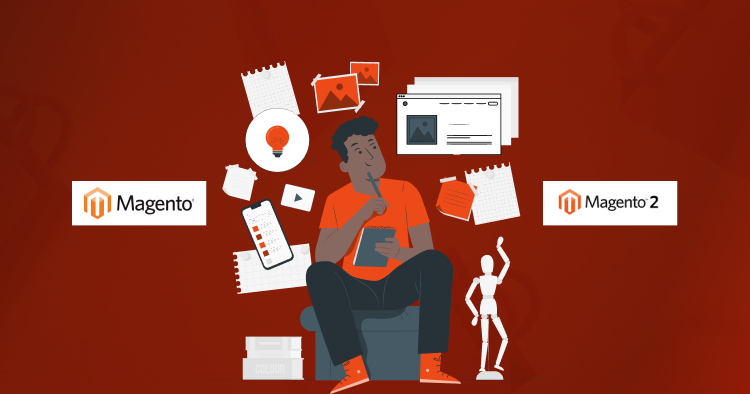Magento 1 to Magento 2 Migration: Why it is must?
Last Updated | July 27, 2023
Table of Contents
Magento 1 to Magento 2 Migration
In 2018, Magento made an announcement that it would be ending the support for Magento 1. As of June 2020, the support for Magento 1 will officially end, and if you are still running your store on Magento 1, then you are in deep waters.
But, there’s still hope; luckily for you Folio3 eCommerce specializes in Magento 2 Migration and upgrade. Below you’ll find everything you need to know about the passing of Magento 1.
Risks Associated with NOT Migrating from Magento 1 to Magento 2
There are a number of risks your store and business will be exposed to should you choose not to move to Magento 2. Security is one of the top risks you should definitely look into. Below is a list of all the threats your store will be exposed to:
1) End of Security Patches – heaven for hackers
Hackers are always on the look for vulnerable ecommerce websites that they can exploit. And not just hackers, your competitors can also play dirty by sending over a DDoS attack to your website or by creating an endless loop of fake registrations causing your website to crash. Once Magento halts the support for Magento 1, your website will be an open invitation to hackers who are always on the lookout for a security flaw. As opposed to Magento 1, Magento 2 has regular security patch rollouts that keep the hackers at bay.
2) Website Hosting Crises – Bye Bye CentOS
Another daunting issue that many Magento 1 platform users will be facing after November 2020 is that they’ll have to look for an alternative to CentOS 6. The CentOS 6 server will not receive any security patches or updates or bug fixes of any kind after November 2020. Therefore, businesses will have to find an alternative, adding more to the costs.
3) Lack of Security for Admins
One of the most basic security functions that developers and store admins use is 2-factor authentication. In Magento 1, store owners needed to buy 3rd party plugins in order to implement 2-factor authentication. Whereas in Magento 2, two-factor authentication is a built-in feature.
4) Extensions Ending M1 Support
As store owners begin to transition from Magento 1 to Magento 2, Extension developers are also doing the same. Many, if not all, extensions will be ending their support for Magento 1. Though you will still be able to use the extension, you will however not be able to update it. This opens up security concerns and customization issues.
5) No Longer PCI Compliant
Every store needs to be PCI compliant. The term PCI Compliance stands for Payment Card Industry Compliance. This term refers to the guidelines and standards set by the PCI Security Standards Council whereby a store owner is required to ensure that the credit card data provided by customers is secure to the core.
In case of noncompliance, the council can impose hefty fines. In addition to the fines, Google will also mark your website as “not secure”, and a warning will be displayed to the user in red. The user will then have to agree to access the website marked “not secure” by Google in order to access the site’s content.
Almost 90% of users if not 100%, leave the website once this message is shown. No one wants to access a website that is not secure and certainly no one in their right minds will submit their card details on such a website.
What are your options now that Magento 1 is about to die?
There are a number of options Magento 1 platform users such as yourself can look into. These options include migrating to Magento 2, BigCommerce, Shopify and WooCommerce. Though some of the options might sound really enticing to you, you might want to look into the details first before making a decision.
Migration from Magento 1 to Magento 2 OR To a platform other than Magento?
Moving from Magento 1 to another platform isn’t a piece of cake. A non-technical store owner will definitely require help from a team of skilled developers or an agency to carry out the task. Do consider the following things before making a switch:
- Switching a platform is a tedious task, not to mention the costs you will incur along the way.
- As compare to Shopify SEO infrastructure, moving to a new platform might put your SEO efforts in danger. During migration, there’s a chance of data loss, and you might end up losing all the back end optimizations.
- All your previous integrations will be lost. With the new platforms, you’ll have to integrate your store with Shopify payment gateways, ERPs, social media, CRM and much more all over again.
- All your paid plugins and extensions will be of no use. You’ll have to buy new extensions for the platform, considering if they do offer them.
Is Migrating from Magento 1 to Magento 2 best option for you?
Migrating to Magento 2 is by far the best option for you. Magento migration is a complex task, and therefore utilizing services of a good agency such as Folio3 might save you from a lot of hassle.
Magento 2 comes with a lot of benefits, some of which are given below:
- Built-in 2 factor authentication
- Built-in elastic search
- A streamlined yet user-friendly checkout process
- Regular security updates and patches
- Extensive features for B2B customers
- Improved admin UI and UX with enhanced backed functionalities
- Drag and drop functionality for building pages
- Built-in bundling and upselling features that are geared to increase your Average Order Value
- Preview environment and campaign scheduling feature
Magento 2 has more to offer apart from the above-mentioned features. And these features will only get better with time. To this day, Magento remains the best platform for enterprises that want to give out a unique yet delightful experience to their website visitors.
FAQs:
Shopify B2B app development company vs. Magento B2B app: How to compare with each other by ASO?
ASO is the app store optimization. In that case, Shopify has the SEO department, but it’s pretty limited. Magento takes an edge over Shopify in SEO since there is a wide range of SEO features, and users can also customize the URLs. Whereas, for Shopify, the users need to install different apps and features to have various SEO features.
RELATED BLOGS:
Magento 1 End of Life – Risks of staying on Magento 1
What are the Best Magento Alternatives and Top Magento Competitors?











